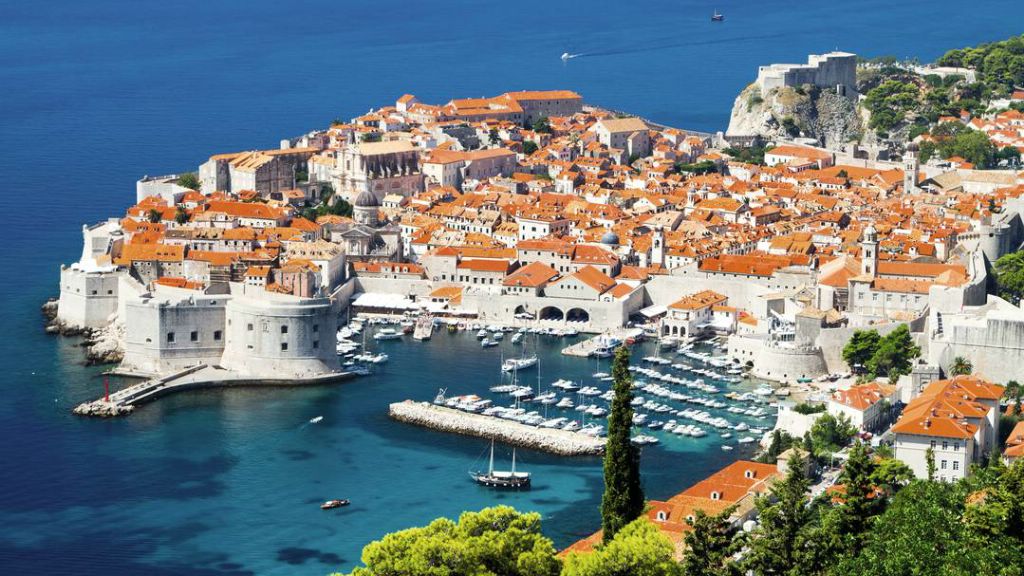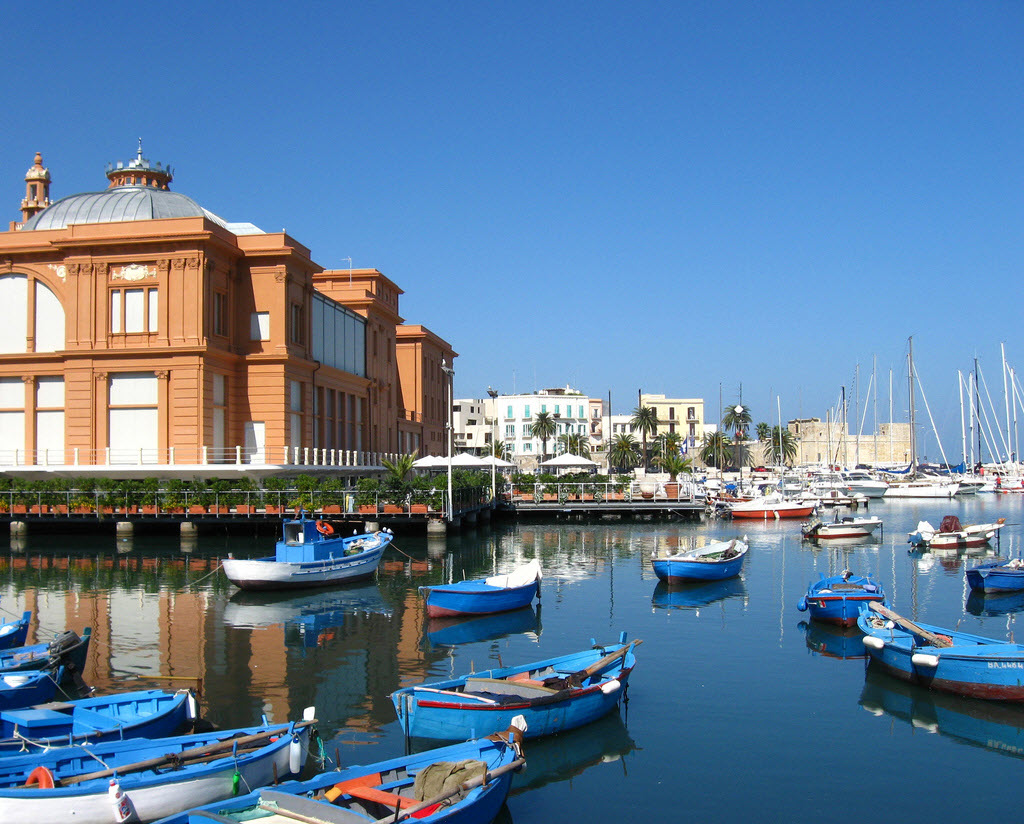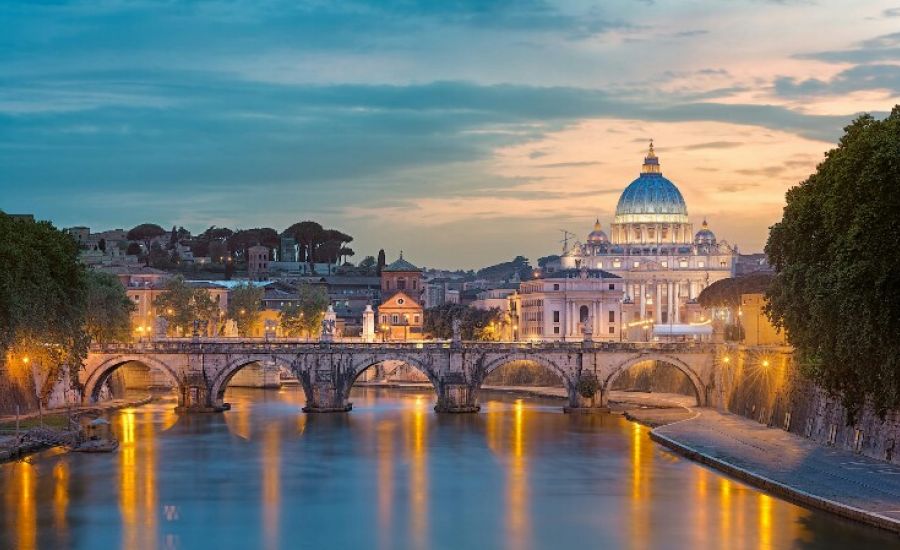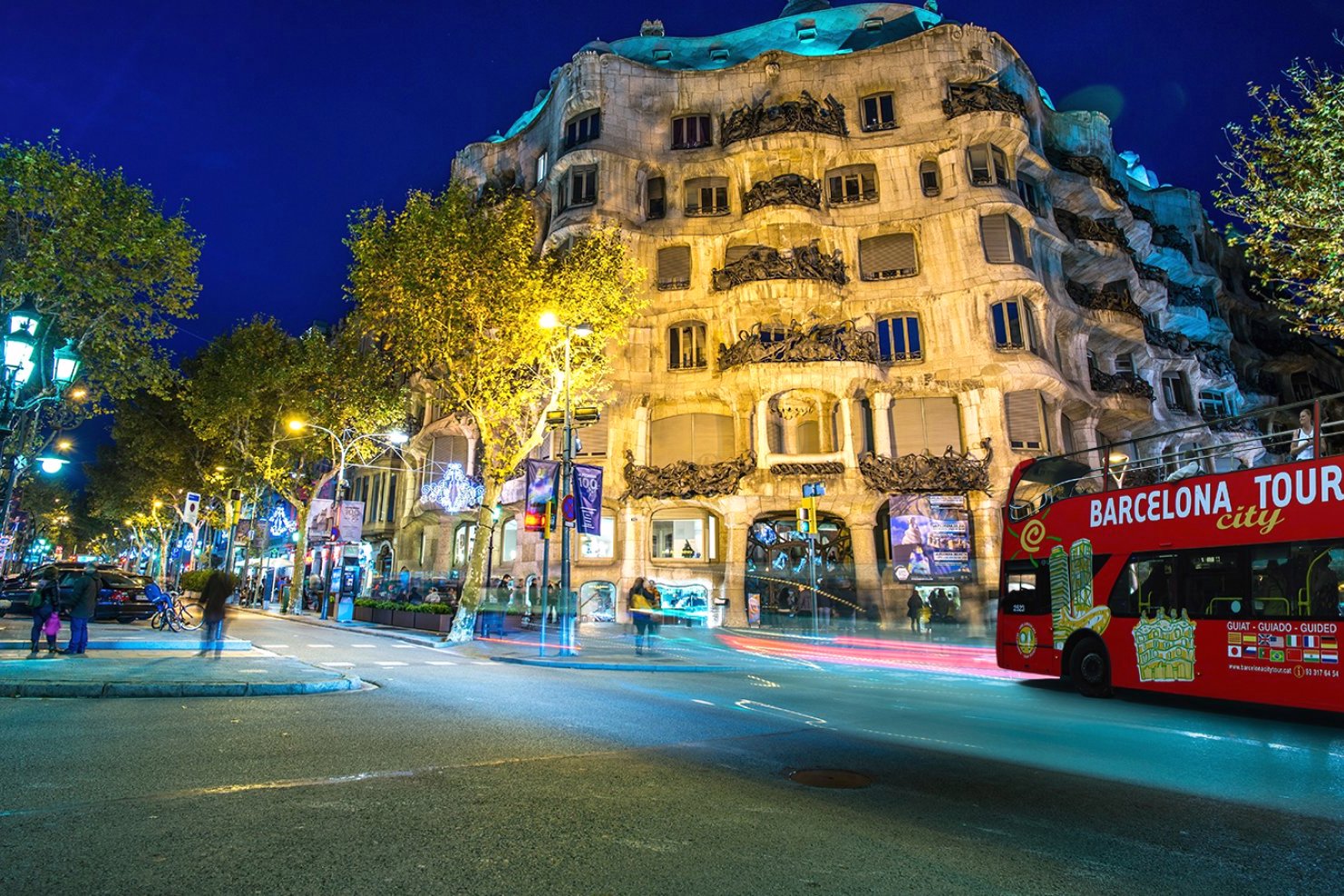

| Cruise Region : Mediterranean Sea, Europe |
| Company : MSC Cruises |
| Ship : MSC Fantasia |
| Journey Start : Wed 29 Oct 2025 |
| Journey End : Sat 08 Nov 2025 |
| Count Nights : 10 nights |
| Day | Port | Date | Arrival | Departure |
|---|---|---|---|---|
| 1 | Trieste / Italy | Wed 29 Oct | 18:00 | |
| 2 | Zadar / Croatia | Thu 30 Oct | 08:00 | 17:00 |
| 3 | Dubrovnik / Croatia | Fri 31 Oct | 08:00 | 19:00 |
| 4 | Everything / Italy | Sat 01 Nov | 09:00 | 18:00 |
| 5 | Corfu / Greece | Sun 02 Nov | 09:00 | 18:00 |
| 6 | Day at sea / Sea | Mon 03 Nov | ||
| 7 | Valletta / Malta | Tue 04 Nov | 09:00 | 18:00 |
| 8 | Messina, o. Sicily / Italy | Wed 05 Nov | 07:00 | 15:00 |
| 9 | Rome (Civitavecchia) / Italy | Thu 06 Nov | 09:00 | 19:00 |
| 10 | Day at sea / Sea | Fri 07 Nov | ||
| 11 | Barcelona / Spain | Sat 08 Nov | 08:00 |
The cruise booking conditions may vary depending on the itinerary, season, and selected package. However, the basic conditions include:
1. **Deposit and Full Payment:**
- A deposit of 30% is required to confirm the booking.
- Full payment is usually required 60-90 days prior to departure. For late bookings, full payment may be required immediately.
2. **Cancellation and Penalties:**
- Cancellation penalties depend on the time remaining before departure. The closer to the departure date, the higher the penalties.
- More than 60 days before departure: €50 per person
- 59 to 30 days: 30% of the total price
- 29 to 22 days: 50%
- 21 to 15 days: 70%
- Less than 14 days before departure: 100%
3. **Booking Changes:**
- Passenger substitutions are subject to an additional fee of €50 per person.
4. **Insurance:**
- It is recommended to purchase travel or medical insurance to cover potential costs in case of cancellation or changes to the booking, as well as medical expenses during the cruise.
5. **Document Requirements:**
- All passengers must have valid passports and visas for visiting countries (if required by the destination) on the cruise itinerary. The responsibility for obtaining visas lies with the passengers.
Important: MSC reserves the right to change the cabin to the same category or higher. However, MSC will do everything possible to avoid changing the cabin.
Additional costs:
Additionally paid on the liner:
For any purchase of goods on the liner in bars, restaurants, shops and services in the spa center, hairdresser, etc. you will be additionally charged a service fee, which will average 15% of the purchase price.
The standard cruise fare typically does not include a drink package. You may choose and add an appropriate drink package to your cruise.
Drink package rules:
- All guests sharing a cabin, including children over 3 years old, must book a drink package. For children, a MINORS PACKAGE is available.
- Seating together in the main restaurant for dinner is only possible if all guests have booked the same drink package or none at all.
- Packages are for personal use only; cruise cards cannot be shared. Only one drink can be ordered per request. If misuse of the package occurs, the cruise company reserves the right to block the package without refunding the remaining days.
- Drink packages are valid every day throughout the cruise and cannot be purchased for individual days.
- Packages are not valid in specialty bars, cafés, and restaurants, including:
- Venchi 1878 establishments, Jean-Philippe Maury venues, MSC Virtuosa Starship Club, MSC World Europa Coffee Emporium, MSC World Europa Raj Polo Tea Room.
- Due to Saudi Arabian law, alcoholic drinks are not available while docked in Saudi Arabian ports. Alcoholic beverages will only be available once the ship leaves the port and is at sea.
- Drink packages purchased onboard will be more expensive than those bought when booking the cruise.
- Detailed lists of drink packages will be available onboard.
- Packages are valid on Sir Bani Yas and Ocean Cay islands.
Prices per person, per day:
Mediterranean; Northern Europe; UAE & Persian Gulf; Red Sea; Caribbean from Fort-de-France*
EASY PACKAGE (adults 18+)
- Cruises 1-7 days: €43
- Cruises 8+ days: €39
√ a selection of classic cocktails, house spirits and mixed drinks
√ non-alcoholic cocktails
√ dedicated selection of house wines by the glass, beer, sodas, fruit juices
√ bottled mineral water
√ classic hot drink (espresso, cappuccino, coffee latte, hot tea)
Valid: 24/7 in select onboard bars, main restaurants, and buffet (excluding specialty restaurants).
EASY PLUS PACKAGE (adults 18+)
- Cruises 1-7 days: €57
- Cruises 8+ days: €54
All drinks priced up to €9 or $10*
√ frozen and classic cocktails, variety of spirit brands, liquors and cordials
√ a selection of wine by the glass
√ a 10% discount on bottled wines purchased onboard
√ a wide variety of draft and bottled beers, non-alcoholic cocktails, soft drinks
√ mineral water
√ coffee drinks, hot chocolate and hot teas
The Easy Plus Package covers all the above served at our bars, buffet, main restaurant and specialty restaurants. What’s more, it also includes Ocean Cay MSC Marine Reserve and other exclusive MSC destinations.
*€9 for European, Dubai, Abu Dhabi and Qatar, Egypt, Red Sea & Saudi Arabia, and Antilles cruises; $10 for Caribbean, Northern America, South America and Asia cruises.
Valid: 24/7 in onboard bars, main restaurants, buffet, and specialty restaurants.
PREMIUM EXTRA PACKAGE (adults 18+)
- Cruises 1-7 days: €77
- Cruises 8+ days: €74
All drinks priced up to €14 or $16*
√ an extensive variety of frozen and classic cocktails, premium brand spirits, liquors and cordials
√ a varied selection of wines and champagne by the glass
√ a 25% discount on bottles of wine and champagne purchased on board
√ our entire selection of draft, craft and bottled beers, sodas, fruit juices
√ mineral water, energy drinks
√ coffee drinks, hot chocolate and teas
Valid: 24/7 in onboard bars, main restaurants, buffet, and specialty restaurants.
ALCOHOL-FREE PACKAGE (adults 18+)
- Cruises 1-7 days: €26
- Cruises 8+ days: €24
√ a wide choice of alcohol-free cocktails, sodas, energy drinks
√ mineral water, flavored water, fruit juices
√ classic coffee drinks and coffee specialties, hot chocolate, hot teas, soft-serve ice cream
Valid: 24/7 in onboard bars, main restaurants, buffet (excluding specialty restaurants).
MINORS PACKAGE (children 3-17 years)**
- Cruises 1-7 days: €18
- Cruises 8+ days: €17
√ alcohol-free cocktails, sodas, energy drinks
√ mineral water, flavored water, fruit juices
√ a selection of coffee drinks, hot chocolate, hot tea and soft-serve ice cream.
Applicable for minors (age respective of the country/operation area) who are part of a group/family purchasing an adult package.
Valid: 24/7 in select onboard bars, main restaurants, and buffet (excluding specialty restaurants).
Prices and rules are similar for other regions, with minor variations in costs for South America, Asia, and the Far East.



Dubrovnik is a Croatian city on the Adriatic Sea. It is one of the most prominent tourist destinations in the Mediterranean Sea, a seaport and the centre of Dubrovnik-Neretva County. Its total population is 42,615 (census 2011). In 1979, the city of Dubrovnik joined the UNESCO list of World Heritage sites.
The prosperity of the city was historically based on maritime trade; as the capital of the maritime Republic of Ragusa, it achieved a high level of development, particularly during the 15th and 16th centuries, as it became notable for its wealth and skilled diplomacy.
In 1991, after the break-up of Yugoslavia, Dubrovnik was besieged by Serbian and Montenegrin soldiers of the Yugoslav People's Army (JNA) for seven months and suffered significant damage from shelling. After repair and restoration works in the 1990s and early 2000s, Dubrovnik re-emerged as one of the top tourist destinations in the Mediterranean.

Bari is the capital city of the Metropolitan City of Bari and of the Apulia region, on the Adriatic Sea, in southern Italy. It is the second most important economic centre of mainland Southern Italy after Naples and Palermo, a port and universitycity, as well as the city of Saint Nicholas. The city itself has a population of 326,799, as of 2015, over 116 square kilometres (45 sq mi), while the urban area has 700,000 inhabitants. The metropolitan area has 1.3 million inhabitants.
Bari is made up of four different urban sections. To the north is the closely built old town on the peninsula between two modern harbours, with the Basilica of Saint Nicholas, the Cathedral of San Sabino (1035–1171) and the Hohenstaufen Castle built for Frederick II, which is now also a major nightlife district. To the south is the Murat quarter (erected by Joachim Murat), the modern heart of the city, which is laid out on a rectangular grid-plan with a promenade on the sea and the major shopping district (the via Sparano and via Argiro).
Modern residential zones surrounding the centre of Bari were built during the 1960s and 1970s replacing the old suburbs that had developed along roads splaying outwards from gates in the city walls. In addition, the outer suburbs developed rapidly during the 1990s. The city has a redeveloped airport named after Pope John Paul II, Karol Wojtyła Airport, with connections to several European cities.

Corfu or Kerkyra is a Greek island in the Ionian Sea. It is the second largest of the Ionian Islands, and, including its small satellite islands, forms the northwesternmost part of Greece. The island is part of the Corfu regional unit, and is administered as a single municipality, which also includes the smaller islands of Ereikoussa, Mathraki and Othonoi. The municipality has an area of 610,9 km2, the island proper 592,8 km2. The principal city of the island and seat of the municipality (pop. 32,095) is also named Corfu. Corfu is home to the Ionian University.
The island is bound up with the history of Greece from the beginnings of Greek mythology. Its history is full of battles and conquests. Ancient Korkyra took part in the Battle of Sybota which was a catalyst for the Peloponnesian War, and, according to Thucydides, the largest naval battle between Greek city states until that time. Thucydides also reports that Korkyra was one of the three great naval powers of fifth century BC Greece, along with Athens and Corinth. Medieval castles punctuating strategic locations across the island are a legacy of struggles in the Middle Ages against invasions by pirates and the Ottomans. Two of these castles enclose its capital, which is the only city in Greece to be surrounded in such a way. As a result, Corfu's capital has been officially declared a Kastropolis ("castle city") by the Greek government. From medieval times and into the 17th century, the island, having successfully repulsed the Ottomans during several sieges, was recognised as a bulwark of the European States against the Ottoman Empireand became one of the most fortified places in Europe. The fortifications of the island were used by the Venetians to defend against Ottoman intrusion into the Adriatic. Corfu eventually fell under British rule following the Napoleonic Wars. Corfu was eventually ceded by the British Empire along with the remaining islands of the United States of the Ionian Islands, and unification with modern Greece was concluded in 1864 under the Treaty of London.
In 2007, the city's old quarter was added to the UNESCO World Heritage List, following a recommendation by ICOMOS.
Corfu is a very popular tourist destination. The island was the location of the 1994 European Union summit.


The capital of Malta - Valletta , is the first and almost the only city in Europe, which was once designed by architects and built according to all the rules and norms of construction. Valletta is considered to be one of the most beautiful cities on the Mediterranean. Klaipeda is on the list of the few remaining fortified towns. The center of the city is the Palace of the Grand Master of the Order of Malta, and today the residence of the President of the country, here is the seat of the Maltese Parliament. The list of places to visit in Valletta includes the Castilla Palace, the Admiralty (where the National Museum of Fine Arts is now located, with the largest painting collection in the country), a charming place in the city - the beautiful Hastings Gardens, and this is not the whole list of the riches of the capital of Malta .


Rome is the capital city and a special comune of Italy (named Comune di Roma Capitale). Rome also serves as the capital of the Lazio region. With 2,872,800 residents in 1,285 km2(496.1 sq mi), it is also the country's most populated comune. It is the fourth-most populous city in the European Union by population within city limits. It is the centre of the Metropolitan City of Rome, which has a population of 4,355,725 residents, thus making it the most populous metropolitan city in Italy. Rome is located in the central-western portion of the Italian Peninsula, within Lazio (Latium), along the shores of the Tiber. The Vatican City (the smallest country in the world) is an independent country inside the city boundaries of Rome, the only existing example of a country within a city: for this reason Rome has been often defined as capital of two states.
Rome's history spans 28 centuries. While Roman mythology dates the founding of Rome at around 753 BC, the site has been inhabited for much longer, making it one of the oldest continuously occupied sites in Europe. The city's early population originated from a mix of Latins, Etruscans, and Sabines. Eventually, the city successively became the capital of the Roman Kingdom, the Roman Republic and the Roman Empire, and is regarded as the birthplace of Western civilization and by some as the first ever metropolis. It was first called The Eternal City (Latin: Urbs Aeterna; Italian: La Città Eterna) by the Roman poet Tibullus in the 1st century BC, and the expression was also taken up by Ovid, Virgil, and Livy. Rome is also called the "Caput Mundi" (Capital of the World). After the fall of the Western Empire, which marked the beginning of the Middle Ages, Rome slowly fell under the political control of the Papacy, which had settled in the city since the 1st century AD, until in the 8th century it became the capital of the Papal States, which lasted until 1870. Beginning with the Renaissance, almost all the popes since Nicholas V (1447–1455) pursued over four hundred years a coherent architectural and urban programme aimed at making the city the artistic and cultural centre of the world. In this way, Rome became first one of the major centres of the Italian Renaissance, and then the birthplace of both the Baroque style and Neoclassicism. Famous artists, painters, sculptors and architects made Rome the centre of their activity, creating masterpieces throughout the city. In 1871, Rome became the capital of the Kingdom of Italy, which, in 1946, became the Italian Republic.
Rome has the status of a global city. In 2016, Rome ranked as the 14th-most-visited city in the world, 3rd most visited in the European Union, and the most popular tourist attraction in Italy. Its historic centre is listed by UNESCO as a World Heritage Site. The famous Vatican Museums are among the world's most visited museums while the Colosseum was the most popular tourist attraction in world with 7.4 million visitors in 2018. Host city for the 1960 Summer Olympics, Rome is the seat of several specialized agencies of the United Nations, such as the Food and Agriculture Organization (FAO), the World Food Programme (WFP) and the International Fund for Agricultural Development (IFAD). The city also hosts the Secretariat of the Parliamentary Assembly of the Union for the Mediterranean (UfM) as well as the headquarters of many international business companies such as Eni, Enel, TIM, Leonardo S.p.A., and national and international banks such as Unicredit and BNL. Its business district, called EUR, is the base of many companies involved in the oil industry, the pharmaceutical industry, and financial services. Rome is also an important fashion and design centre thanks to renowned international brands centered in the city. Rome's Cinecittà Studios have been the set of many Academy Award–winning movies.


Barcelona is a city in Spain. It is the capital and largest city of Catalonia, as well as the second most populous municipality of Spain. With a population of 1.6 million within city limits, its urban area extends to numerous neighbouring municipalities within the Province of Barcelona and is home to around 4.8 million people, making it the sixth most populous urban area in the European Union after Paris, London, Madrid, the Ruhr area and Milan. It is one of the largest metropolises on the Mediterranean Sea, located on the coast between the mouths of the rivers Llobregat and Besòs, and bounded to the west by the Serra de Collserola mountain range, the tallest peak of which is 512 metres (1,680 feet) high.
Founded as a Roman city, in the Middle Ages Barcelona became the capital of the County of Barcelona. After merging with the Kingdom of Aragon, Barcelona continued to be an important city in the Crown of Aragon as an economic and administrative centre of this Crown and the capital of the Principality of Catalonia. Barcelona has a rich cultural heritage and is today an important cultural centre and a major tourist destination. Particularly renowned are the architectural works of Antoni Gaudí and Lluís Domènech i Montaner, which have been designated UNESCO World Heritage Sites. The headquarters of the Union for the Mediterranean are located in Barcelona. The city is known for hosting the 1992 Summer Olympics as well as world-class conferences and expositions and also many international sport tournaments.
Barcelona is one of the world's leading tourist, economic, trade fair and cultural centres, and its influence in commerce, education, entertainment, media, fashion, science, and the arts all contribute to its status as one of the world's major global cities. It is a major cultural and economic centre in southwestern Europe, 24th in the world (before Zürich, after Frankfurt) and a financial centre. In 2008 it was the fourth most economically powerful city by GDP in the European Union and 35th in the world with GDP amounting to €177 billion. In 2012 Barcelona had a GDP of $170 billion; and it was leading Spain in employment rate in that moment.
In 2009 the city was ranked Europe's third and one of the world's most successful as a city brand. In the same year the city was ranked Europe's fourth best city for business and fastest improving European city, with growth improved by 17% per year, and the city has been experiencing strong and renewed growth for the past three years. Since 2011 Barcelona has been a leading smart city in Europe. Barcelona is a transport hub, with the Port of Barcelona being one of Europe's principal seaports and busiest European passenger port, an international airport, Barcelona–El Prat Airport, which handles over 50 million passengers per year, an extensive motorway network, and a high-speed rail line with a link to France and the rest of Europe.